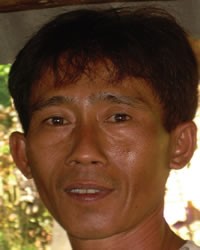Sanggau-Sekadau in Indonesia

Photo Source:
Copyrighted © 2026
Anonymous All rights reserved. Used with permission |
Send Joshua Project a map of this people group.
|
| People Name: | Sanggau-Sekadau |
| Country: | Indonesia |
| 10/40 Window: | Yes |
| Population: | 48,000 |
| World Population: | 48,000 |
| Primary Language: | Sanggau |
| Primary Religion: | Islam |
| Christian Adherents: | 3.01 % |
| Evangelicals: | 0.06 % |
| Scripture: | Portions |
| Ministry Resources: | No |
| Jesus Film: | Yes |
| Audio Recordings: | Yes |
| People Cluster: | Borneo-Kalimantan |
| Affinity Bloc: | Malay Peoples |
| Progress Level: |
|
Introduction / History
Most Dayak people groups in the Sanggau and Sekadau districts are Catholic or Protestant. But the Sanggau-Sekadu are Dayak people who follow Islam. Some have changed religions for personal reasons while others have married with a Muslim Melayu transmigrant. Dayaks are the native people groups in the Kalimantan Island. The Sanggau-Sekadau group lives in the areas of Sanggau and Sekadau, which are separated by only about an hour's travel by public transportation. Dayaks become Sanggau-Sekadau Muslims either as individuals, in a family, or together with all the people in a larger group. The term "Dayak Senganan" refers to a group of Dayaks who are Muslims, who claim themselves as Sekadau Malay. The Sanggau-Sekadau live mostly around the capital cities of the Sanggau and Sekadau regencies in Kalimantan. The specific factors involved in their changing of religion have been obscured by several generations of time. The Sanggau-Sekadau group is part of the Dayak ethnolinguistic grouping called the Land Dayak which also includes the Bakati, Bakati Rara (Serawak, Malaysia), Bakati Sara, Bidayuh (Serawak, Malaysia), Jangkang, Kembayan, Ribun, Semandang and Benyadu.
What Are Their Lives Like?
The Trans- Kalimantan Road crosses over the Sanggau and Sekadau lands in Eastern Kalimantan regency. The road, however, does not go through Central and Western Kalimantan. The Sanggau-Sekadau live together in small numbers with the Dayak and other transmigrants. The Kapuas and Sekayam are the two main rivers in the area. Rivers serve as the main transportation conduits for people living in most villages, as land transportation is very difficult. Distribution of goods such as food, medicines, agricultural products and more also takes place via the rivers. Water vehicles commonly include sampan (small boats), barges and motorboats. The Sanggau-Sekadau make their living through farming and fishing in the river. Many Sanggau-Sekadau, however, are poor.
What Are Their Beliefs?
In general, the Sanggau-Sekadau claim to follow Islam. Mystical influences, however, are still evident in their lives. A shaman is an important figure in their society, but they are considered poor because of the many prohibitions placed upon them. The Sanggau-Sekadu live in the middle of the larger Christian Dayak group. Up to the present, there have not been any religious conflicts between the Dayaks and Sanggau-Sekadau.
What Are Their Needs?
Although the Sanggau-Sekadau live near the regency's capital city, they still lag behind other groups economically. Their per capita income is still lower than the minimum requirement for a basic standard of living. Because of this, assistance to begin trade could help them see their economic potential and utilize their position in the regency's capital, which has good economic access. Additionally, the Sanggau area still doesn't have enough teachers. This is an urgent need which has been identified by the local government.
Prayer Points
Pray for the Sanggau-Sekadau people to experience and embrace the glory of the Lord.
Pray for Sanggau-Sekadau elders to have dreams and visions of the risen Christ that will open their hearts to the one who is truth.
Pray for Sanggau-Sekadau disciples who will make more disciples, blessing their entire community.